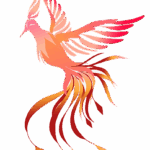
This briefing outlines key features of rendering and material workflows in Navisworks, focusing on Autodesk’s shift to a unified rendering engine, material tools, lighting controls, and export options.
Pre-2015: Used both Presenter and Autodesk Renderer.
Post-2015: Autodesk Renderer became the sole standard, offering better integration with Revit and 3ds Max.
✅ Benefit: Materials created in Revit or 3ds Max remain consistent when imported into Navisworks, ensuring a smoother workflow.
Drag & Drop or Assign to Selection.
Integrated with Autodesk material libraries.
Customize or create project-specific materials.
Filter to show only materials used in the current project.
Auto-assign materials based on naming conventions.
Enhances efficiency across Primavera, Revit, 3ds Max, Navisworks.
Ideal for large projects with standardized naming systems.
Previously allowed basic drag & drop, editing, and saving.
No longer supported after 2015.
Add Point or Spot lights.
Use Sun & Sky settings for outdoor lighting realism.
Adjust intensity, direction, and environmental effects.
Presets: Low, Medium, High.
Time-based: Coffee Break (~10 min), Lunch (~1 hr), Overnight (~12 hrs).
Light Quality: Simple → Advanced.
Images: PNG, JPG, BMP with defined resolution & anti-aliasing.
Videos: Export TimeLiner or current animations (choose FPS, aspect ratio, quality).
Stick to Autodesk Renderer for future-proofing.
Leverage naming consistency across platforms for efficient workflows.
Use low-quality previews before full renders.
Avoid deprecated Presenter workflows in future projects.